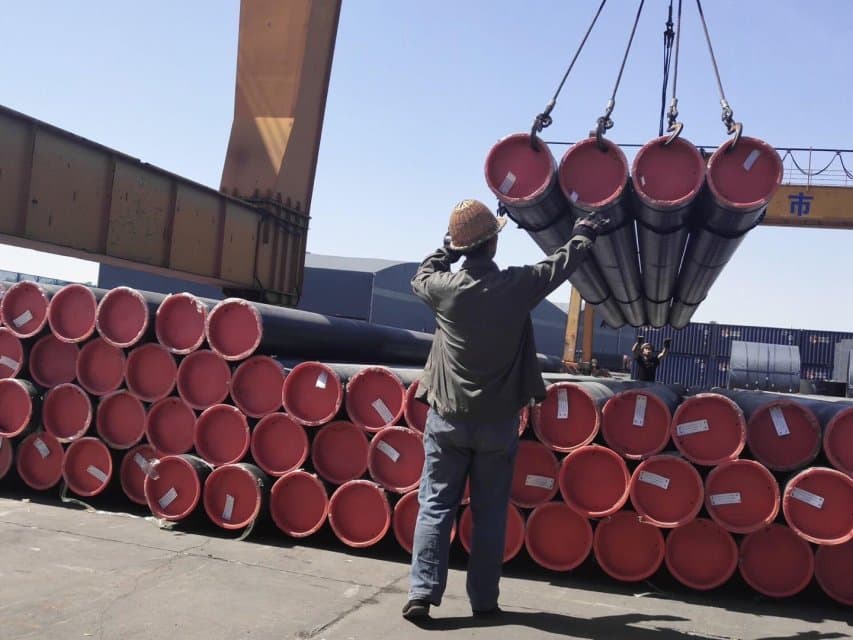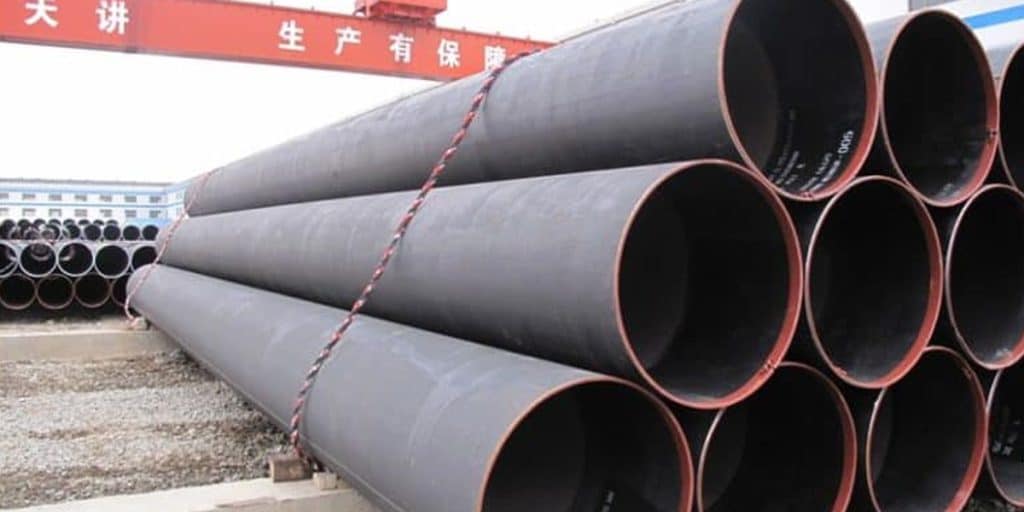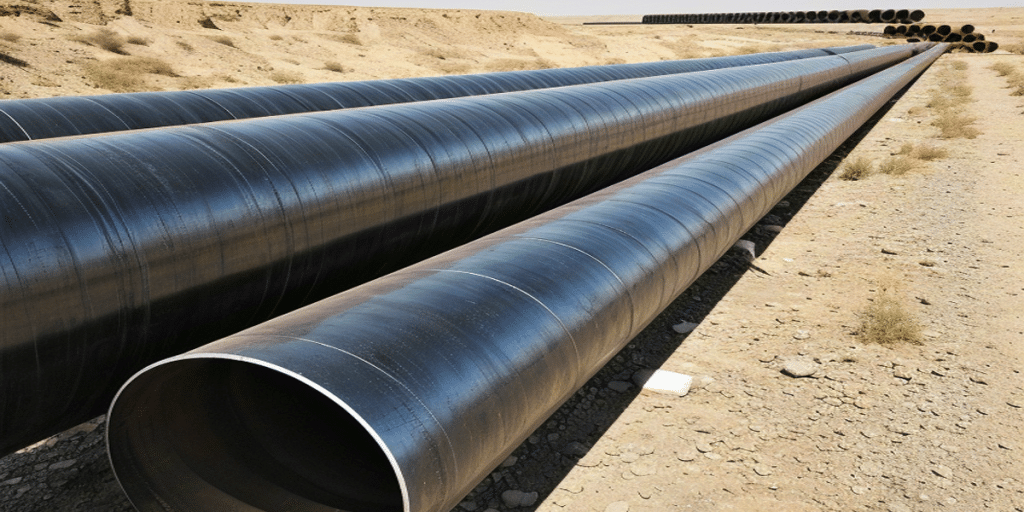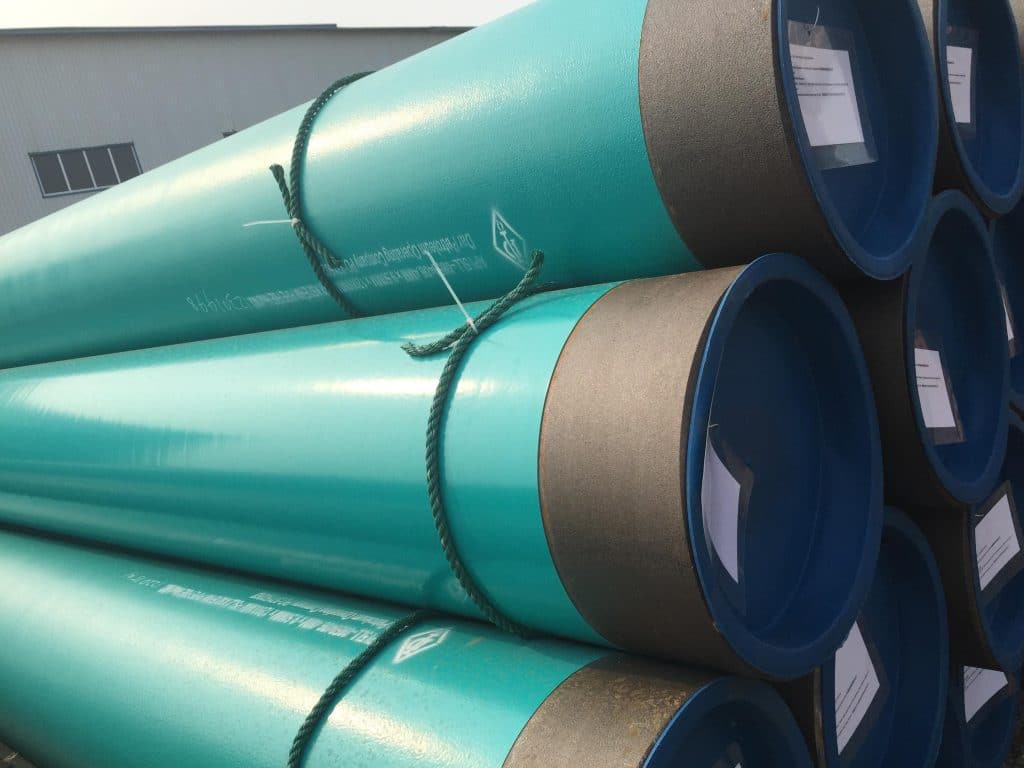- 1. What is ASTM A53?
- 2. Key Differences Between ERW (Type E) and Seamless (Type S) Pipes
- 3. Key Indicators and Standard Basis
- 4. Mechanical Properties (Minimum Values, Representative Data)
- 5. Sizes and Delivery
- 6. Inspection and Pressure Testing (Compliance Key Points)
- 7. Application Scenario Recommendations
- 8. Selection Checklist
- 9. Frequently Asked Questions (FAQ)
- 10. What Can LONGMA Do for You?
- 11. References & Basis
Under the ASTM A53 standard, both ERW welded pipes (Type E) and seamless pipes (Type S) can be used for general pressure transmission (of steam, water, gas, and air) and structural applications, with sizes ranging from NPS 1/8 to 26. In conventional engineering projects, ERW pipes are often preferred for their cost-effectiveness and shorter lead times; seamless pipes, on the other hand, are more suitable for scenarios requiring higher medium purity, complex forming, or where concerns about welds exist. Both pipe types are available in Grade A and Grade B, with Grade B offering higher strength. When selecting a pipe type, the core criteria include the medium’s pressure/temperature, acceptance of welds, budget, and lead time.
What is ASTM A53?
- Scope of Coverage: Includes black pipes and hot-dip galvanized pipes; seamless pipes (Type S), electric resistance welded (ERW) pipes (Type E), and continuous furnace-welded pipes (Type F). The most common types are Type S and Type E. Sizes range from NPS 1/8 to 26.
- Typical Applications: Mechanical and pressure piping; also suitable for steam, water, gas, and air pipelines. The pipes can be welded, coiled, bent, and flanged.
- Grades & Minimum Strength:
- Grade A: ~205 MPa yield strength, ~330 MPa tensile strength;
- Grade B: ~240 MPa yield strength, ~415 MPa tensile strength (more commonly used).
Key Differences Between ERW (Type E) and Seamless (Type S) Pipes
| Dimension | ERW (Type E) | Seamless (Type S) |
| Manufacturing Process | Longitudinal electric resistance welding (ERW) of coiled steel plates; For A53 Grade B, welds require heat treatment at ≥540 °C to eliminate untempered martensite | Hot-rolled pipe formation via piercing of round billets; cold finishing for precision if necessary |
| Size Range (ASTM A53) | NPS 1/8 – 26 | NPS 1/8 – 26 |
| Mechanical Grades | Grade A / Grade B (same as Type S) | Grade A / Grade B |
| Inspection | Hydrostatic testing or non-destructive electrical testing (NDE); Specific requirements for welds | Hydrostatic testing or NDE; Focus on overall base material quality |
| Forming/Bending | Good (more stable with larger bending radius R) | Excellent (no welds, more suitable for demanding bending applications) |
| Surface/Purity | Modern ERW pipes have consistent weld quality; Verification required for some high-purity media | Excellent (no weld paths) |
| Lead Time & Cost | More favorable (due to coiled steel raw material and continuous production) | Relatively higher |
| Typical Applications | Fire protection, HVAC, water supply/drainage, general pressure pipelines, structural components | High-temperature/high-pressure transition sections, critical elbow/coiled sections, medium lines sensitive to welds |
Note: The minimum weld heat treatment temperature for A53 Type E Grade B is 1000 °F (≈540 °C); inspection allows the use of hydrostatic testing or non-destructive testing (NDE).
Key Indicators and Standard Basis
-
Mechanical Properties (Minimum Values, Representative Data)
This table is for quick comparison between Grade A and Grade B; unit conversions are provided in the table.
| Pipe Type | Grade | Minimum Yield Strength (MPa) | Minimum Tensile Strength (MPa) |
| Type E / S | A | 205 | 330 |
| Type E / S | B | 240 | 415 |
Source: Public abstracts of ASTM A53 specifications and technical pages from major pipe suppliers.
-
Sizes and Delivery
- Size System: NPS (Nominal Pipe Size), covering NPS 1/8 – 26. Common wall thicknesses are primarily Schedule 10/40/80.
- End Forms: Plain ends (PE), threaded ends (NPT), or grooved ends (for matching system components), selected based on project requirements.
-
Inspection and Pressure Testing (Compliance Key Points)
- Hydrostatic Testing: Each pipe must undergo hydrostatic pressure holding for no less than 5 seconds; typical upper pressure limits (examples): ≤2500 psi for NPS ≤3; ≤2800 psi for NPS >3 (manufacturers may voluntarily set higher limits).
- Non-Destructive Electrical Testing (NDE): Each Type E pipe’s welds are tested individually, serving as an alternative or supplement to hydrostatic testing (as specified in purchase documents).
Application Scenario Recommendations
- Comprehensive Municipal/Civil Piping (Fire Protection, HVAC, Water Supply): Prioritize A53 Type E/Grade B. It meets pressure and corrosion resistance requirements while offering fast lead times and cost-effectiveness. Select Schedule 40/80 and match with galvanization or coating systems.
- Sections Requiring Complex Cold Bending/Coiling: Prioritize Type S (seamless) pipes, as they offer better springback control and stress distribution during bending.
- Media with Zero Weld Tolerance/Ultra-High Purity: Prefer seamless pipes or switch to higher-grade standards (e.g., ASTM A106/alloy steel), and verify compliance with process requirements.
- Large-Diameter Structural Pipes or Dock Pile Pipes: ASTM A53 is not the primary choice; consider LSAW (Longitudinal Submerged Arc Welded) series (e.g., API 5L, ASTM A252, A671/A672) to meet demands for larger diameters and thicker walls (LONGMA provides LSAW pipes).
Selection Checklist
- Define the medium, pressure, and temperature → Preselect Grade B (for higher strength and versatility).
- Determine if welds are acceptable and assess bending complexity → If acceptable, prioritize ERW; if welds are unacceptable or bending requirements are strict, select seamless.
- Confirm the size and wall thickness (per NPS & Schedule), and specify the end form and anti-corrosion system.
- Designate the inspection method (hydrostatic testing or NDE) and supply standard (latest version of A53/A53M).
Frequently Asked Questions (FAQ)
Q1: Will the weld of A53 ERW pipes become a weak point?
A1: For Grade B, ASTM A53 explicitly requires weld heat treatment at ≥540 °C to eliminate untempered martensite, combined with hydrostatic testing or NDE. This ensures the pipes meet strength and sealing requirements for standard applications.
Q2: What is the maximum size of ASTM A53 pipes?
A2: The standard covers sizes from NPS 1/8 to 26. For larger diameters, it is recommended to use other standard systems such as LSAW (e.g., API 5L, ASTM A252).
What Can LONGMA Do for You?
- Expertise & Experience: Over 20 years of steel pipe manufacturing experience, focusing on ERW and LSAW round pipes. Strict control of raw materials and weld heat treatment parameters ensures consistent quality across batches.
- Full-Process Quality Assurance: For A53 ERW pipes, we provide weld heat treatment records, NDE reports, hydrostatic pressure curves, and chemical/mechanical data packages (supporting EN 10204 3.1).
- Lead Time & Cost Advantages: Direct procurement of coiled steel and flexible production lines; regular stock of commonly used Grade B / Sch40/80 pipes for fast delivery.
- Engineering Support: Offer services such as selection calculation, bending radius recommendations, coating system selection, and consultation on valve/flange connection matching.
- One-Stop Solution for Larger Diameters: If ASTM A53 sizes are insufficient, our LSAW product line can switch to API 5L / ASTM A252 / A671/A672 solutions to cover demands for larger diameters and thicker walls.
Contact us now to get pipe selection and quotation recommendations within 48 hours (including bill of materials and delivery cycle), and request the A53 ERW/Seamless Comparison Brochure (PDF) and typical project cases.
References & Basis
- ASTM Official Standard Page (A53/A53M-22, Scope and Dimensions).
- American Piping/Amerpipe (ASTM A53 Mechanical Properties and Overview).
- Totten Tubes (ASTM A53 Tensile/Yield Strength Summary).
- Weld Heat Treatment Requirements for A53 Type E (≥1000 °F/540 °C).
- Hydrostatic/Non-Destructive Inspection Clauses (Examples of ASTM A53 Testing Duration and Pressure Upper Limits).






